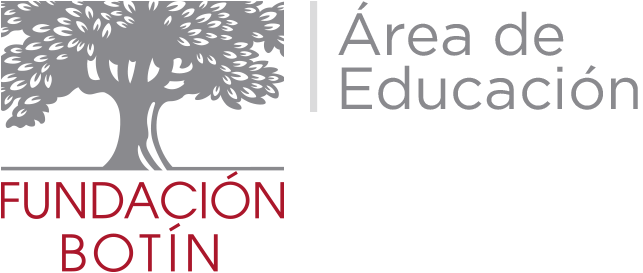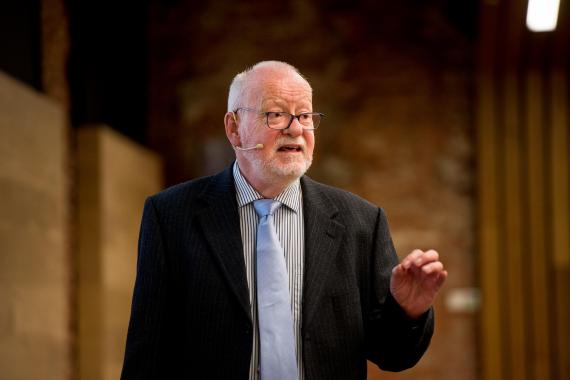Aprender experimentando la vida
- Is Waldorf educational system still revolutionary nowadays?
Waldorf Steiner Education is defined by its approach to children and their learning, which means it should evolve over time to meet contemporary needs and circumstances in any particular culture. Some elements in the first school, founded in 1919, remain relevant today but also have be continually reassessed in the light of where we are now. Childhood today is not the same as childhood one hundred years ago, yet certain aspects of human evolution have not changed. It is the teacher’s job to meet the needs of every individual child and develop their methodology and adapt the curriculum contents accordingly. In that sense Waldorf schools have the possibility to bring about change and new perspectives but like all social structures they have their strengths and weaknesses. What unites them however is the sense that we could always do better and our children deserve our efforts.
2. What is it based on?
The basis is Rudolf Steiner’s original insights into the mental, physical, emotional, social and spiritual growth of developing human beings. However all practitioners are expected to work on this themselves both as a team and individually. It is not a dogma or a body of rules but more of an inspiration to look deeper at what it means to be a human being and a child in our times.
3. How is the first phase developed? (0-7 years)
A young child absorbs everything from their social environment and then imitates it. It is a complete immersion into their surroundings. Hence their acquisition of language and bodily skills. Key to this is the ability to play because through play a child exercises their imagination, learns to deal with the physical properties of matter, discovers how to accommodate and collaborate with others, finds an outlet for their natural curiosity and finds joy and satisfaction in it. This free play is an essential element in Waldorf early years provision and allows the children to be children in a full and healthy way. It can help cultivate a positive attitude to life and develops an ability to learn academically later when it is introduced in an age-appropriate way.
4. Art and music are very important to Waldorf pedagogy. Why? Does not Waldorf education teach children to read or write?
To be functional in our world every child has to learn to read and write but the question is when. Some children learn it early and fast others need more time yet they all should feel the wonder of it and a respect for the capacities that make it possible. It is harmful to push young children into feeling themselves failures because they are not neurologically developed enough to deal with abstractions like letters. So of course Waldorf schools teach these skills but not necessarily at the same time as in conventional education. There are many other wonderful aspects of being a child that also should be respected and given time.
The arts are key to a fulfilling and meaningful education and play a very central role in Waldorf schools The practice and appreciation of the arts can bring children a sense of wonder, positive social interaction, enhanced self-worth, consciousness of their unique potential, wider and deeper life perspectives and the joy of being challenged and producing something of worth. What else are schools for?
5. Does the fact that there are alternative pedagogies mean that traditional education fails?
There is plenty of evidence to show that an arts-rich curriculum can benefit children in many ways, yet the practice of the arts in educational settings are being diminished and relegated to the fringes by allowing a commercialised and competitive mentality to increasingly dictate what is being taught in our schools. This is excessively short sighted and a profound experience of the arts for all children should be considered a right not just a privilege. In many countries the arts are being relegated to a minor element in the school curriculum, but as the jobs of the past vanish in front of our noses and as deep social, economic, and environmental problems hover over the horizon it should be apparent that our children’s future depends on creativity, the ability to work together and find new ways of self and social development. The arts provide a foundation for this.
6. What defines the stage from 7 to 14 years?
We forget how much children perceive the world through their feelings especially at this stage in their lives. So the art of teaching should address this and thereby meet what is actually living in the child. This can engender a love of learning that lasts for life and allows the child’s natural curiosity to flourish and not be smothered in meaningless rote learning or irrelevant facts. How we feel about what we learn and what we do with it is as important as what we learn, because that feeling becomes a part of our individuality and later outlook on life.
7. What is important at puberty?
Puberty is a great transformation for a person. The world looks very different than it did earlier and all relations to it and to other people are radically changed. Our intellectual capacities grow as we question, criticize and analyze everything around us and re-find ourselves. During these years we hopefully develop the skill of making sound judgments and the capacity to love in a new and powerful way. A sensitive school curriculum should assist support this inner development as a new personality is born. It is strange that traditionally the turbulences of this age are somehow neglected in an institution where young people spend so much of their time and energy because of our obsession with only measurable results. Fulfillment can be found in many ways. By making education meaningful we can help young people find the path that suits them as individuals, including doing well in exams.
8. What would you change in European educational systems? And in Spanish educational system?
Our school systems are antiquated and suit a world that is long gone. By experiencing, exchanging and assessing innovative practices we can find new and more relevant ways of working with our children and young people and give them the possibility to be co-creators of the world, which in fact they are whether we acknowledge it or not. They are the future. The UN Rights of the Child Declaration of 1989 gives a context within which all nations should be working but they are unfortunately mostly remiss in this because of their trying to hold on to old certainties in a world that has moved on. We need the courage, creativity and imagination to fundamentally rethink schooling across the world.
9. The children with Attention Deficit Hyperactivity Disorder is increasing. Why?
I am not an expert in this but I think it is connected to our modern lifestyles and what we expose our children to. It is calculated that the symptoms of attention deficit, hyperactivity and uncontrolled impulsiveness now penalize about 4% of children. We cannot turn the clock back, nor should we wish too, but we can balance the way children experience life by, for instance, giving them more direct contact with nature, limiting the time spent with technological devices and moderate screen time, giving them more of our own time and helping them find the joy and challenges of artistic expression where their attention span is strengthened.
10. What the most important thing parents can contribute with?
Schools are communities of our own making and as humans everybody is on their own path of learning throughout life. Being a parent is fundamentally a challenging and life changing experience and once embarked on never stops. It is also emotionally testing in that we all get something wrong at some point and therefore feel guilty and inadequate, especially in our fast-changing world where our children inhabit a different world than we did when young. Whole school communities can supply support, learning opportunities and solidarity for everybody connected to them. By enthusiastic parental involvement and belongingness we can re-envision ‘school’ so that it becomes a centre of community life where everybody can benefit, whether child, teacher or parent, from interaction with each other.
Christopher Clouder


